
| 28 May, 2024 |
| 911 GTS
turns to hybrid and a single electric turbo |
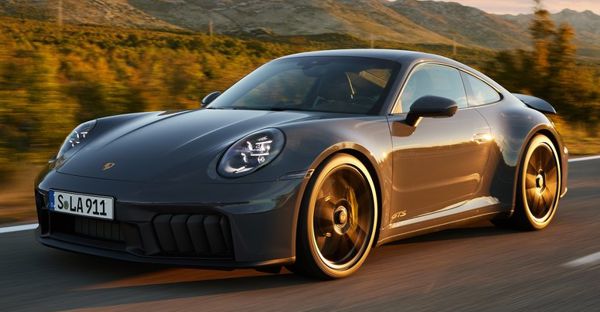 When Porsche designed the 992 generation, it was supposed to support hybrid power. Somehow, it took Weissach 5 years to figure out how to pack hybrid power without too much weight and handling penalty. The result is this new 911 Carrera GTS. Performance figures first: the new GTS has lapped Nurburgring in 7:16.9, some 8.7 sec less than its predecessor. It hits 60 mph from rest in 2.9 seconds, 100 mph in 6.8s and 124 mph in 10.5s, 0.4, 0.8 and 1.1 second respectively quicker than before. Meanwhile, top speed inches up by 1 mph to 194 mph. The entire car weighs 1595 kg DIN, 50 kg heavier than before, which is rather modest for a hybrid conversion. However, this figure excludes the rear dog seats, which are now listed as optional equipment, so the actual weight gain is more likely 75 kg. 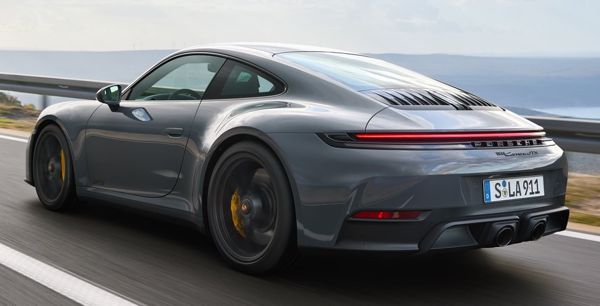 The new GTS is a lot more slippery than any 911 has ever been. Thanks to new active shutter intakes at either side of its nose, its aerodynamic drag coefficient is lowered from 0.32 to merely 0.27, remarkable for a sports car. Combined output of the hybrid powertrain is 541 hp and 450 lbft, an increase of 61 hp and 30 lbft over its predecessor. The disc-shape electric motor of the hybrid system is incorporated into the ZF-built 8-speed PDK gearbox. It produces 54 hp and 111 lbft of torque, doubling as starter generator to cut weight. A 1.9 kWh lithium battery weighing 27 kg is mounted above the front axle, reducing the fuel tank slightly and needs to move the 12V battery under the area used to be rear seats. Inverter and power control module is placed directly above the boxer engine, which has been redesigned to be lower. As seen, the hybrid 911 remains a rear-driver, unlike Lamborghini or Corvette which use the opportunity of hybridization to introduce all-wheel drive. That said, the GTS can always mate with mechanical 4-wheel drive system when it is called Carrera 4 GTS. 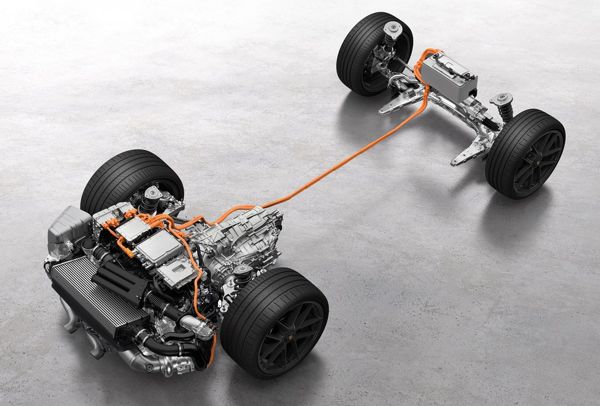 The biggest change is actually the engine. Surprisingly, its capacity is enlarged from 3.0 to 3.6 liters, or more precisely 3591 cc. This involves enlarging the bore from 91 to 97mm and lengthening the stroke from 76.4 to 81mm. Compression ratio is raised slightly to 10.5:1. Even more surprising is the abandoning of twin-turbo design and reverts to a single large turbo, something last served the air-cooled 964 Turbo until 1994. However, like the outgoing VTG turbos, this one is built by BorgWarner and features state-of-the-art technology: electrical assistance. A 27 hp electric motor is added between the exhaust turbine and compressor wheel to help spooling up the turbine quickly, reducing turbo lag even though the turbo is much larger. It is like the electric turbo employed by the latest Mercedes SL43 and C63, but goes one step further: it can recapture exhaust gas energy like the MGU-H motor in Formula One. When the exhaust turbine produces more boost than the engine requires, the turbo motor acts as a generator, harvesting up to 15 hp from the hot exhaust stream while slowing down the turbine, preventing the latter to exceed its 125,000 rpm rev limit. This also allows the engine to eliminate conventional wastegate. 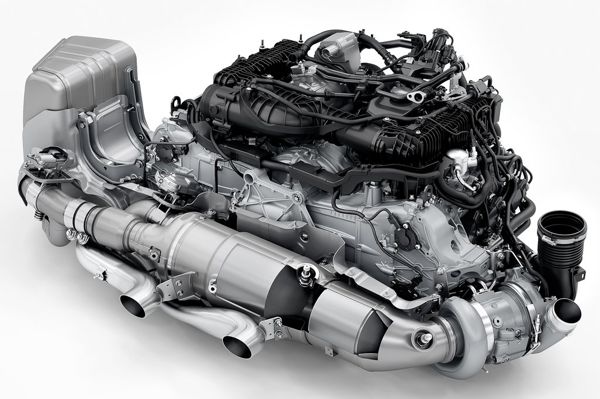 Because of the much improved turbo boost response, Porsche decided to ditch the long-serving variable valve lift mechanism, i.e. the "Plus" element of VarioCam Plus. This removes the switchable tappets and allows the new engine to use rocker arms to reduce friction. The single turbo is placed at the right side of the engine, so the exhaust manifolds from the left engine bank is much longer, requiring some design consideration to balance the gas flow. On the plus side, the single turbo makes exhaust after-treatment easier, requiring only one particulate filter, catalytic converter and silencer. The new exhaust pipes exit from the center of the tail, different from the old car. The engine alone produces 485 hp and 420 lbft, just 5 ponies more than the outgoing 3.0-liter GTS engine. Surprisingly, it runs higher boost pressure at 1.8 bar instead of 1.3 bar. This is because Porsche decided to run an air-fuel mixture ratio at Lambda=1, abandoning the conventional arrangement of using richer mixture at high load in order to clean up emission. It means the hybrid engine will be future-proofed, not afraid of tightening emission regulations, but on the downside is less cooling effect can be achieved from fuel injection, hence the need to retard ignition at full throttle and less power can be extracted from a given capacity. Therefore it needs to enlarge engine capacity and run a higher boost pressure. Whether this will have adverse effect on fuel consumption at lighter loads is unknown, because Porsche has yet to release its fuel consmption figures. However, it is understood that the new hybrid technology is more a performance upgrade than a means to boost fuel efficiency. Other changes to the car include 10mm wider rear tires (now 315/30ZR21) to handle the extra power, standard rear-wheel steering and a new fully digital instrument - the latter sadly replaces the traditional analogue rev counter. |
| |
| 8 May, 2024 |
| BMW M4 CS |
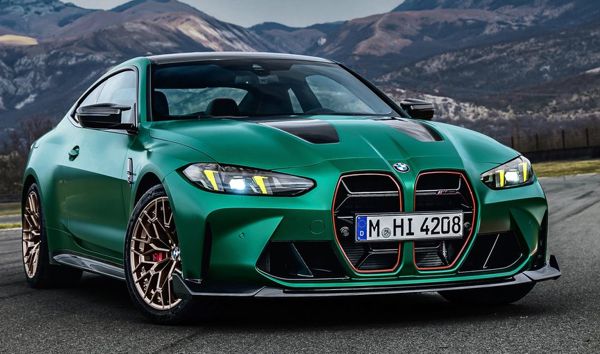 The hierarchy of BMW's M-cars gets increasingly crowded. Following M4, M4 Competition, M4 Competition xDrive and M4 CSL, now enters M4 CS. The M4 CS is practically the coupe version of M3 CS. It sits between the M4 Competition xDrive and the now defunct, 1000 units-only M4 CSL. Most of the performance modifications are carried over from the CSL, such as the 550 hp version engine, which is merely 20 hp more than the M4 Competition xDrive which has earned a boost to 530 hp recently. Like the CSL as well, it gets carbon-fiber bonnet, M Carbon bucket seats and titanium exhaust. However, the weight saving measures are not quite as extensive as the CSL, because it retains the rear seats, xDrive system, steel brakes and sound insulation materials, among others, so it is only 20 kg lighter than the Competition xDrive, rather than 150 kg in the case of CSL. Performance figures are exactly the same as those of M3 CS: 188 mph top speed, 0-60 mph in 3.3 seconds, 8 mph faster and a tenth quicker than the Competition xDrive. BMW claims it has lapped the 20.8km Nurburging course in 7:22, just 4 seconds behind the CSL. The lap time was set by using Michelin Cup 2 R tires instead of the standard Cup 2. Outside, the CS looks the same as the CSL up front, sharing the same specially designed grilles, ventilated bonnet and more pronounced front splitter. At the back, however, its tail is identical to the lesser M4 Competition, lacking the CSL's pronounced boot lid spoiler. As a production model, the CS is very expensive at £120,000, some £30,000 more than the Competition xDrive, and just £9,000 less than the limited edition CSL commanded a couple of years ago. However, if you see it as a CSL with free xDrive and rear seats, it might sound a bargain. |
| |
| 3 May, 2024 |
| Ferrari
12Cilindri replaces 812 |
 This is probably the first time a new generation Ferrari comes with no performance gains. Yes, the strangely named 12Cilindri is no faster than the 812 Superfast it replaces, keeps quoting 0-62 and 0-124 mph in 2.9 and 7.9 seconds, respectively, and its top speed remains unchanged at "more than 211 mph". Ferrari's engineers were busying making the 6.5-liter V12, codenamed F140HD, comply with the latest Euro 6e emission standard and stricter noise regulations. This involves new intake manifolds and ceramic catatylic converters, although the details of modifications are unknown. To compensate, it adopts the lightweight know-hows of the 812 Competizione, i.e., titanium connecting rods, plus slightly lighter pistons (by 2%) and camshaft (by 3%). This allows the V12 to rev to 9500 rpm like the Competizione and produces the same 830 horsepower at 9250 rpm. That's 30 horses up from the production 812 Superfast that the 12Cilindri replaces directly. Sounds good, but the flipside is peak torque drops from 529 to 500 pound-foot, and it arrives 250 rpm higher at 7250 rpm. Fortunately, despite the lower peak number, the torque curve looks a healthier shape, as 80 percent of peak torque is available from 2500 rpm upward, down a full 1000 rpm.  Problem is, the 12Cilindri is 35 kilograms heavier than its predecessor in coupe form. Tick the Spider option will add another 60 kg. This means a dry weight quoted at 1560 and 1620 kg, respectively. And you know, Ferrari's weight figures are not very reliable. At least, the extra kilos are well spent to lift the torsional rigidity of chassis by 15 percent. The gains for Spider is even higher, as Ferrari claims it loses only 1 percent rigidity to the coupe, thanks to strengthened sills, windscreen header and bulkhead. Furthermore, both cars are certainly more stylish than their predecessors. The pointy "shark nose" is unquestionably a tribute to the classic Daytona. The shape of its headlights, signal lamps, the black panel bridging between the headlights and the twin hot air vents on the front-hinged clamshell bonnet are all so familiar to Daytona's lovers. However, the rest of the car are quite different. Curvy fenders front and rear follow the theme set by Roma and inject a sense of beauty not found in the previous 812 family.  At the back, it is even a stark contrast to its predecessor. The coupe's standard panoramic glass roof flows towards the small glass tailgate, which graphically extends sideway to form a delta wing. Those triangular black body panels at either side of the tailgate are actually active spoilers, as they can be pivoted upward slightly (only 25mm) to generate downforce. And this is balanced by the active flaps at the front underbody. The big Ferrari GT is not a track car though, as it generates just 50 kg of downforce at 155 mph. The chassis basis are developed from the 812 family obviously. Wheelbase is shortened by 20 mm to 2700 mm to boost agility slightly. The suspensions of 812 are kept, as is standard active rear-wheel steering and active differential, but the new car rides on 21-inch alloy wheels instead of the previous 20-inch items, so despite running tires with the same width the traction and grip they produce should be more. The Side Slip Control program has been updated, while conversion to brake-by-wire system should reduce stopping distances. Oh yes, the 7-speed DCT gearbox has been updated to 8-speed. It still rests at the rear axle to enable a slightly rear-biased weight distribution, although at 48:52 it is not quite as rear-biased as the 812 Superfast.  As seen, from technical or performance point of view, the new car is not a huge leap you would normally expect for a new generation Ferrari. Its main objective is to keep the excitement of naturally aspirated V12 alive, while making the Ferrari flagship grand tourer more accessible for everyday driving. The latter can be seen from an overhauled cabin, which copies the twin-cockpit layout of Roma, sharing the steering wheel, driver and passenger instrument displays with the smaller Ferrari. However, the Roma's unloved 8.4-inch portrait touchscreen has been replaced with a 10.25-inch landscape unit. The tinted glass roof the coupe should give the cabin more sense of space, even though it comes at the cost of kerb weight. The 812 Superfast was known and sometimes criticised to be superfast, probably too fast for street. The 12Cilindri certainly doesn't need to be any quicker, but a more rounded character and higher quality finish would not go amiss.  But one thing is inevitable: price hike. At an estimated €400K / £400K / $420K, it will be a whopping 60 percent more expensive than the 812 Superfast went on sale 7 years ago. |
| |
